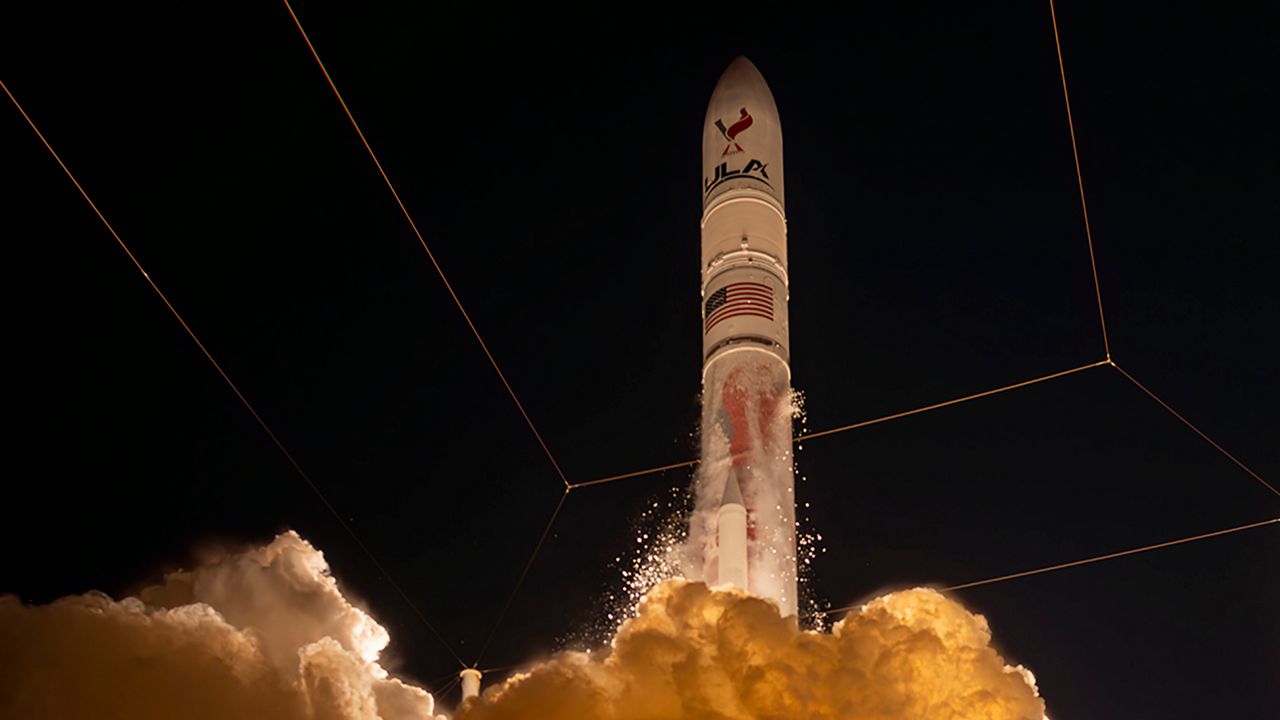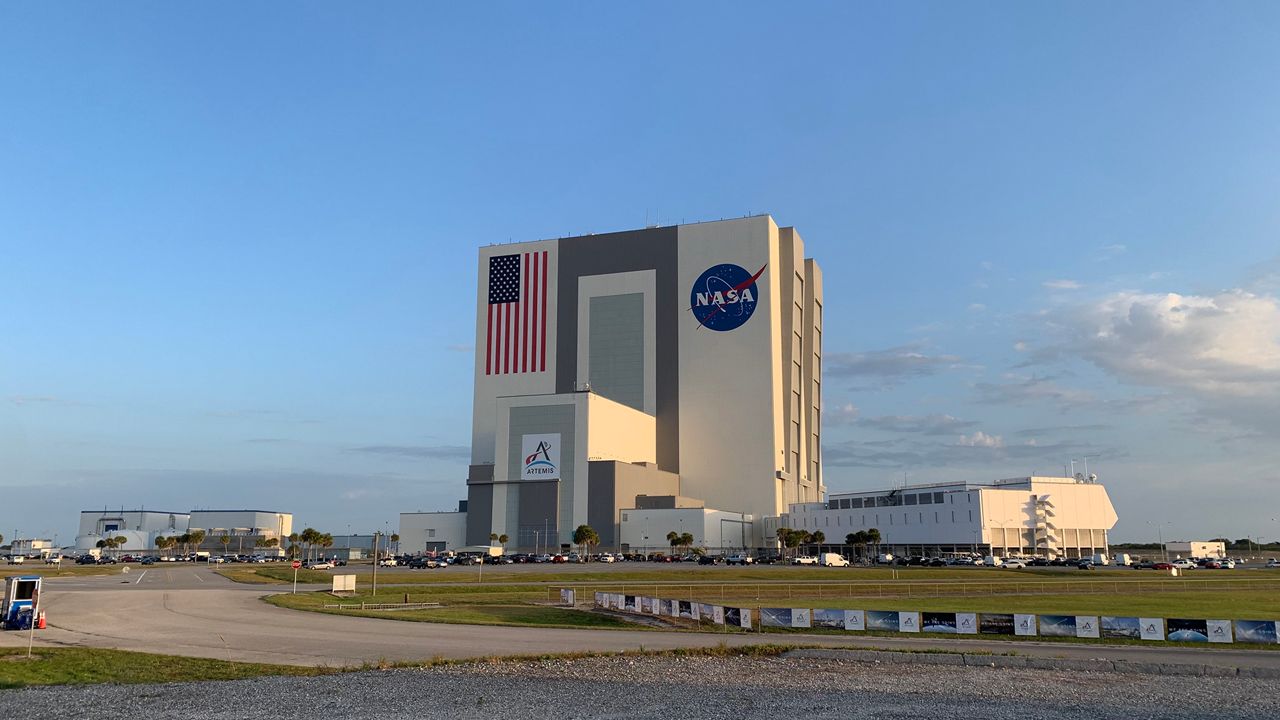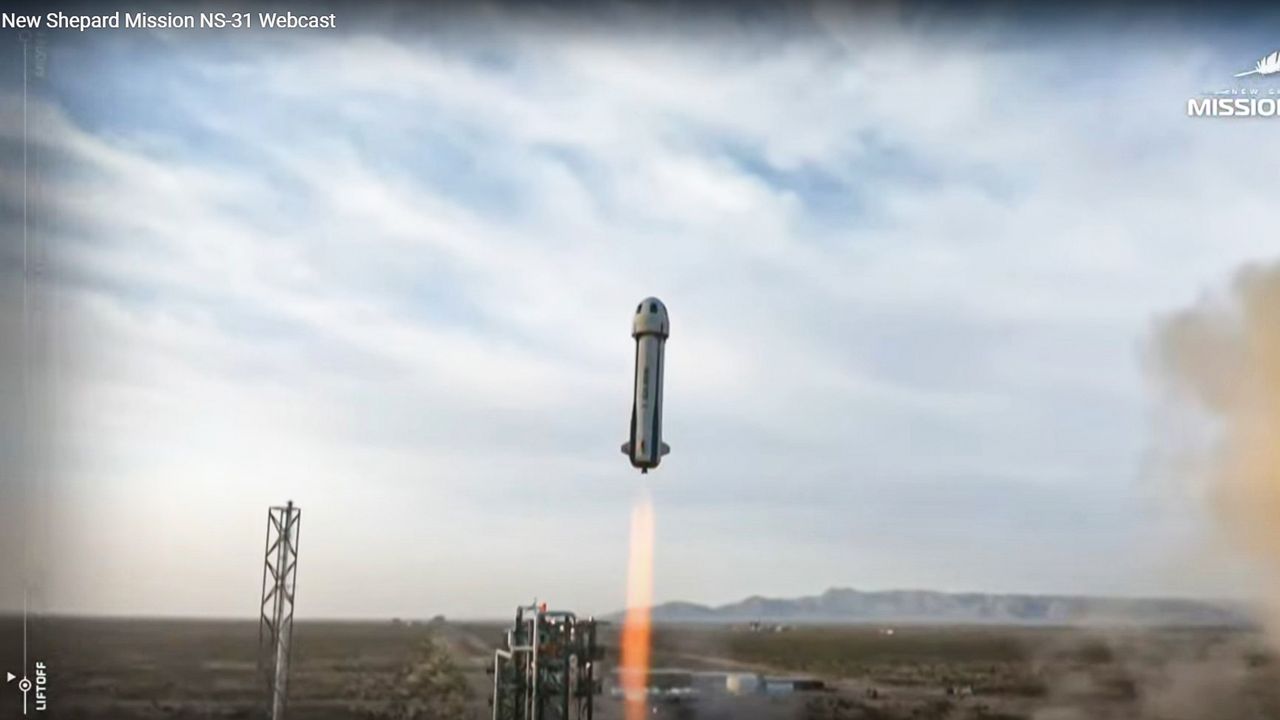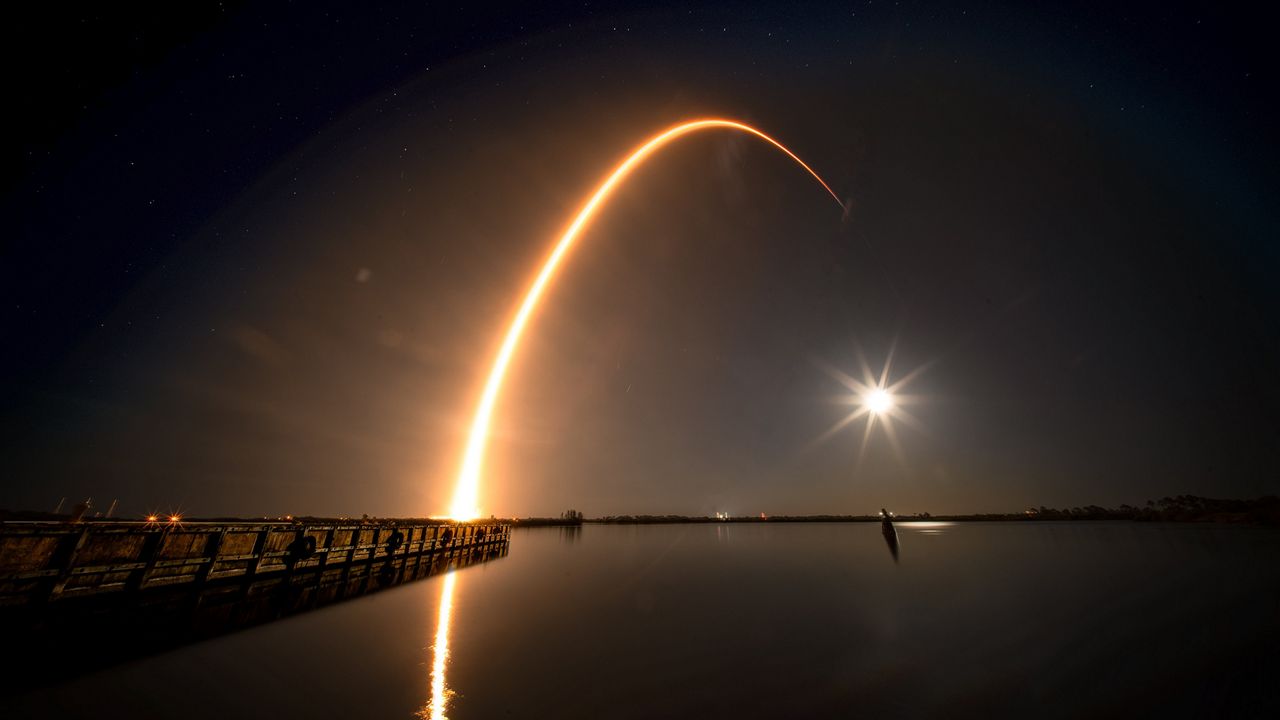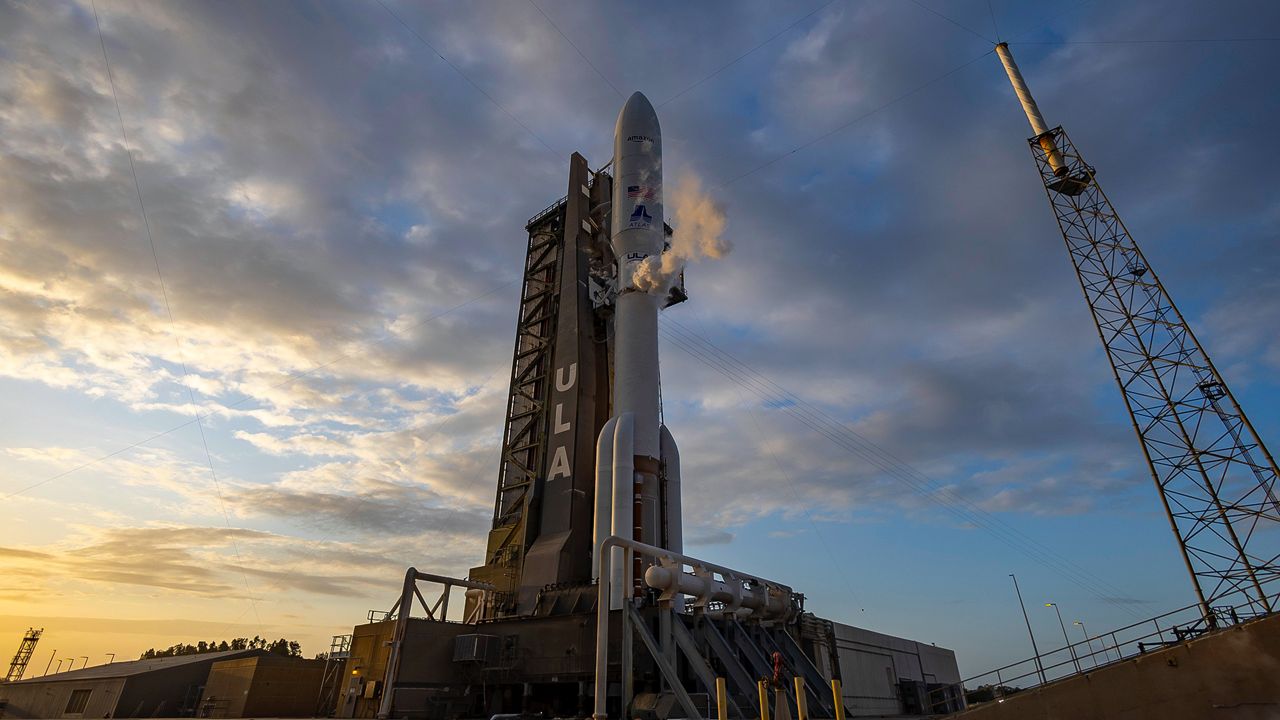CAPE CANAVERAL SPACE FORCE — United Launch Alliance, or ULA, made history as it launched its new Vulcan rocket for the first time, sending its two payloads to the moon.
What You Need To Know
- ULA’s Vulcan Centaur rocket left from Space Launch Complex 41 at Cape Canaveral Space Force Station
- The Cert-1 mission's payload is Astrobotic's Peregrine commercial lunar lander, which has its own payloads
- The mission is going to the moon with various tests
- UPDATE on Peregrine lunar lander as it experiences "an anomaly" ▶
- Get more space coverage here ▶
- 🔻Scroll down to watch the launch🔻
We have liftoff! The first American commercial robotic launch to the Moon will deliver science instruments to study its surface, a critical part of preparing for future #Artemis missions. https://t.co/KoOZjXvqjD pic.twitter.com/Vo2Dnn6TwA
— NASA (@NASA) January 8, 2024
ULA’s Vulcan Centaur rocket left Space Launch Complex 41 at Cape Canaveral Space Force Station at 2:18 a.m. ET, stated the company.
For the First Certification Mission, or Cert-1, the 45th Weather Squadron called for an 85% chance of good launch conditions.
The mission was originally going to be launched on Christmas Eve of 2023, but it was pushed back.
It is the first launch for ULA in 2024.
ULA’s Vulcan Centaur rocket is set to be the successor of the company’s two popular rockets: The Atlas V and the Delta IV.
About the rocket
Since it is carrying one payload fairing, the Vulcan Centaur’s height is about 202 feet tall (or 61.6 meters tall). If the Vulcan Centaur is carrying two payload fairings, the height will increase to 221 feet or 67.4 meters, according to ULA’s documentation of the rocket.
The Vulcan, for this mission the VC2S type, is the booster, while the Centaur is the second stage.
The Vulcan rocket’s engines are made up from different aerospace companies.
- 2 Blue Origin’s methane-fueled BE-4 main engines
- 2 Northrop Grumman Space Systems’ GEM 63XL solid rocket boosters
- 2 hydrogen-fueled RL10C-1-1A engines on the Centaur V upper stage

The rocket will be fueled with about 1 million pounds (454,000 kilograms) of methane, liquid oxygen and liquid hydrogen, explained ULA.
“The maximum launch vehicle thrust at liftoff is over 3.3M pounds, provided by a combination of Blue Origin BE-4 main engines, each delivering 2446.5-kN (550klbf) sea level thrust, and zero, two, four, or six Northrop Grumman Space Systems GEM 63XL Solid Rocket Boosters (SRBs),” stated ULA in documentation of the rocket. For this launch, only two SRBs will be used.
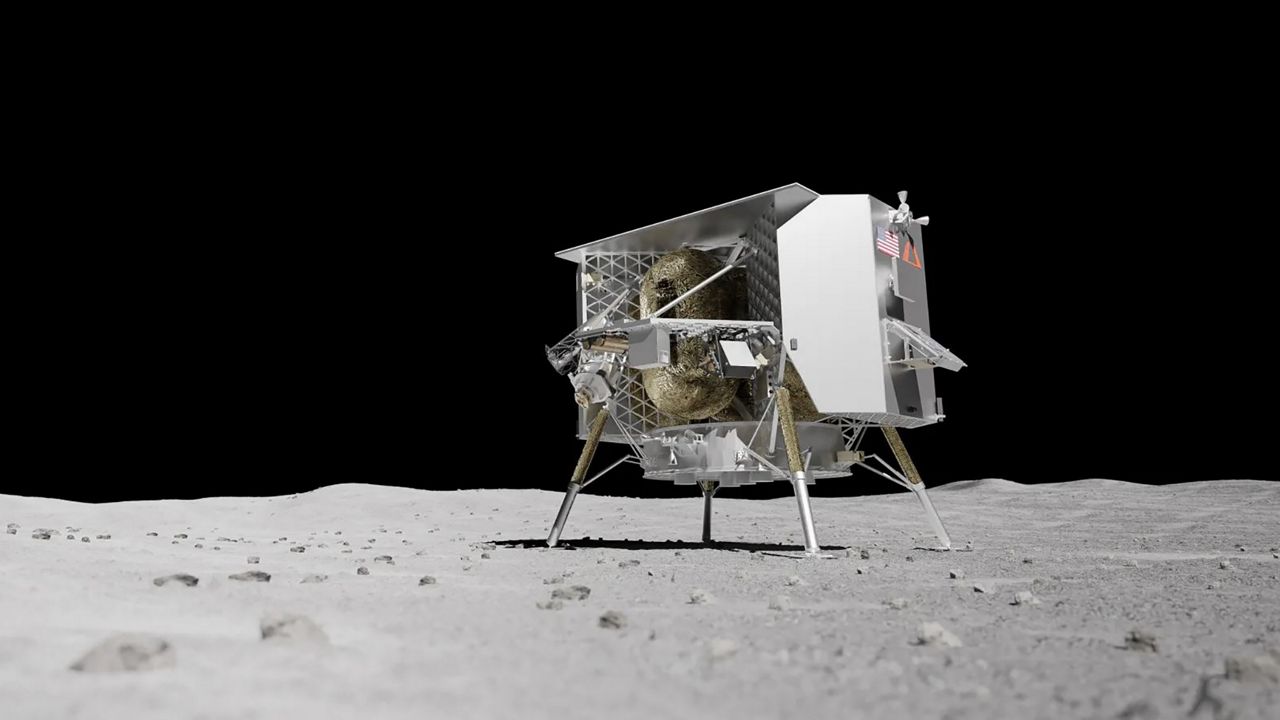
Understanding the mission
ULA’s CEO Tory Bruno explained back in October that the Vulcan Centaur’s inaugural flight will have two payloads: Astrobotic, which will carry a commercial lunar lander. And a payload for Celestis, which will contain the ashes of people who wanted to be buried in space.
“Cert-1 will deliver the Astrobotic Peregrine commercial lunar lander into a highly elliptical orbit more than 220,000 miles (360,000 km) above Earth to intercept the Moon and will carry a Celestis Memorial Spaceflight Payload into deep space,” ULA stated.
Astrobotic’s Peregrine Lunar Lander is carrying scientific missions to Earth’s little sister, the moon. If successful, it will be the first private space company to land on the moon. In fact, it will be the first U.S. moon landing since the Apollo 17 in 1972.
"We're excited and proud that we may be the first American landing on the moon since 1972, but first and foremost, I think is safe landing to prove that we've developed a spacecraft correctly, that that we were operating correctly, that that it works and ultimately that it provides services to the payload customers that we've designed it for," says Sharad Bhaskaran, Astrobotic Peregrine Mission One director.
- Laser Retroreflector Array (LRA): The Laser Retroreflector is very much like a landing beacon, where an orbiting craft (or one coming in for a landing) can shine a laser down, hits the LRA and the LRA bounces the light back to the craft. The craft will know how close it is to the lunar surface.
- Neutron Spectrometer System (NSS): This device “will determine the composition of the majority of the regolith at the landing site as well as measure the abundance of hydrogen-bearing materials.”
- Linear Energy Transfer Spectrometer (LETS): This will determine the amount of radiation on the moon, which will eventually help future Artemis astronauts.
- Near InfraRed Volatiles Spectrometer System (NIRVSS): This will measure hydration (water and hydroxide), carbon monoxide and methane on both the moon’s surface and under it. This device will eventually be placed on rovers.
- Peregrine Ion-Trap Mass Spectrometer (PITMS): “PITMS will characterize the lunar exosphere after descent and landing, and throughout the lunar day, to understand the release and movement of volatile species,” NASA described.
NASA explained the lander’s trip to the moon.
“After separation, an Earth orbit period, and cruise to the moon, the lunar orbit phase starts. It will consist of a high, medium, and finally a circular 100 km altitude orbit,” the space agency stated.
The lander is expected to land on the moon’s Sinus Viscositatis area on Friday, Feb. 23, 2024.
The private space company Astrobotic, based in Pittsburgh, Pa., offers its services to any space agency or company that is interested in sending items or experiments up to the moon.
The company’s Peregrine lander is part of NASA’s Commercial Lunar Payload Services initiative and the Artemis program, which will send humans back to the moon.
Including NASA's experiments, Peregrine is carrying a total of 21 payloads from governments, companies, universities and individuals, the company stated.
"Peregrine will carry a diverse suite of scientific instruments, technologies, mementos, and other payloads from six different countries, dozens of science teams, and hundreds of individuals," Astrobotic stated.
One of these companies is Celestis, which conducts memorial space missions for those who have died.
"We get everybody from the Star Trek folks to the astronauts and everybody in between. but the common denominator is they look up at night and go, that's where I belong," Celestis CEO Charlie Chafer told Spectrum News.
Reporter Greg Pallone contributed to this article.




